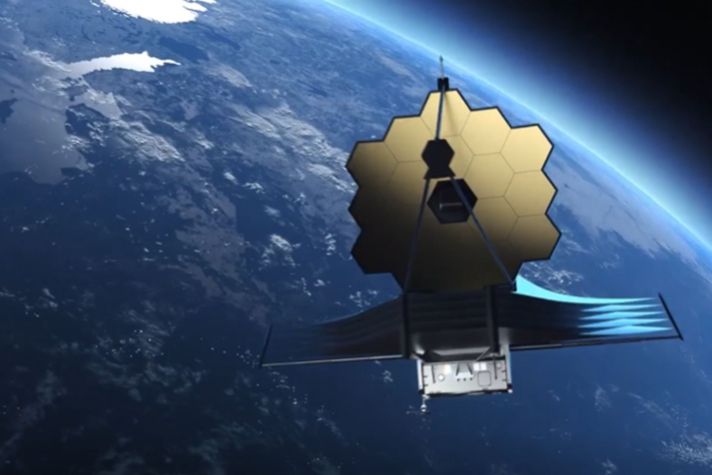-
Global
-
Africa
-
Asia Pacific
-
Europe
-
Latin America
-
Middle East
-
North America
- |
- BUSINESSES
- |
- Contact
- |
-
Global
-
Africa
-
Asia Pacific
-
Europe
-
Latin America
-
Middle East
-
North America
- |
- BUSINESSES
- |
- Contact
- |
You are browsing the product catalog for
You are viewing the overview and resources for
- News
- The Future of 9 Industries
The Future of 9 Industries
Look into our crystal ball – how these technologies will transform the way we live
August 3, 2019
From buildings that we work in to the transportation that makes it easier to travel the world, one thing we know about the future is that data is fueling it.
When we harness previously disparate information from technology into a holistic view – we can do a lot. In many cases, that Internet of Things (IoT) is already transforming industries. IDC’s Spending Guide forecasts that IoT spending will reach $1.2 trillion in 2022 and our recent survey indicated that nine in ten leaders believe the Industrial Internet of Things (IIoT) will pay for itself.
Here are some ways the future will impact the way the world works and the people that live in it every day.
The future of living in space: Humans will inhabit the galaxy
How it works: Technology will make it possible to thrive outside of the Earth’s atmosphere. From breathing on Mars, to spending time on the Lunar Gateway, which will be a spaceship that orbits the moon with living quarters and laboratories; people will be able to physically go farther exploring the universe than ever before.
What it means: We will be able to expand our experience, see uncharted territories and discover the unknown.
The future of air travel: No flight delays
How it works: With software, it’s possible to reduce flight delays related to maintenance, preparing aircraft for takeoff and avoiding bad weather. Honeywell Forge for Airlines collects data across a fleet to enable operators to know when parts need to be replaced, thus reducing unscheduled maintenance and delays. Weather radar technologies also help pilots avoid severe weather during a flight. On the ground, advanced sensors and software act to get ramp vehicles in place – exactly when they are needed - quickening turnaround times.
What it means: More flights will be on time, thus increasing efficiency among airline operators, saving them money and reducing frustrated passengers.
The future of buildings: The places we occupy will anticipate our needs
How it works: The Internet of Things provides powerful data about buildings using sensors to monitor lighting, temperature controls, maintenance and space usage. Those analytics can guide decisions about how space can be used more efficiently and where energy can be saved.
What it means: From airports to museums to office towers, our needs will be met better than ever.
The future of cybersecurity: Software will protect against constant threats
How it works: Cybersecurity solutions must outsmart sophisticated threats that are constantly evolving. We uncover vulnerable areas and combine software and hardware to constantly monitor and protect systems.
What it means: The power grid and other critical infrastructure will operate smoothly and be protected even as criminals work harder to compromise those systems.
The future of energy: Batteries will keep the lights on
How it works: Utility providers will rely more and more on batteries to store power in addition to coal-powered, nuclear and renewable energies such as solar and wind. Batteries will charge in off-peak times and provide energy when demand on the grid peaks.
What it means: Battery storage offers alternatives to traditional non-renewable energy such as coal-power power plants. It will allow utilities to provide cheaper energy during high-demand periods like hot summers and cold winters. Demand for battery storage is expected to grow to the equivalent of about half of all renewable energy generated today by 2040, according to global nonprofit World Bank Group.
The future of free shipping: Faster delivery on your terms
How it works: Free two-day shipping is already starting to be replaced by next-day and same-day delivery. Distribution centers will rely more heavily on robotics and other automation solutions to speed up the journey from the moment you hit submit order until your item is shipped. Customers will also want to specify when and where they receive their orders: For example, the trunk of your car.
What it means: Online shopping and ecommerce will continue to grow as will customers’ expectations for quick delivery when and where they want.
The future of fuel: Engines will be powered by plants
How it works: Honeywell Green Jet Fuel is made from feedstocks like waste fats and inedible crops. Rice husks? Mustard seeds? Both have been used to power jet engines. Reliance on these alternatives to fossil fuels will become more common. Especially across the airline industry, where some stakeholders have committed to achieve “carbon-neutral growth by 2020 and a 50 percent reduction” in greenhouse gas emissions by 2050, according to the International Renewable Energy Agency.
What it means: Dependency on traditional polluting fossil fuels can be reduced as alternatives emerge that can help the planet. The green jet fuel and green diesel fuel have the potential to reduce greenhouse gas emissions by up to 85 percent.
The future of industrial safety: Fewer workers will get hurt on the job
How it works: Software will collect data such as dangerous gas levels and harmful noise levels, from ‘wearable’ devices for workers such as gas detectors or intelligent hearing protection and other smart wear. That enables near instant awareness for changes in a worker’s environment, personal health and safety. Safety managers supervising remotely can monitor these changes and respond immediately to incidents like a fall or gas leak
What it means: More catastrophes can be avoided. Workers will be safer and more productive. Companies will reap better return on investment from their safety equipment and process machinery, see their liability costs go down and be more competitive.
The future of transportation: Flying in air taxis
How it works: Urban Air Mobility vehicles – with their wide variety of innovative designs – will transport passengers to places that are too far to drive but too short for a traditional flight. The vehicles will eventually be operated with driverless technology and could transform the way we navigate cities.
What it means: Road congestion will be reduced, and people can work farther distances from where they live.
Copyright © 2025 Honeywell International Inc.




